Imagine a world where your doctor knows your health status better than you do—thanks to the Internet of Things (IoT). This tech revolution is transforming healthcare from a reactive to a proactive industry, making it as easy as pie to monitor patients in real-time. With smart devices connected to the internet, healthcare professionals can track vital signs, manage chronic conditions, and even remind patients to take their meds. Who knew health could be so smart?
Table of Contents
ToggleOverview of IoT in Healthcare
IoT in healthcare revolutionizes patient care by integrating smart technology into medical practices. Smart devices facilitate real-time monitoring, enhancing the ability of healthcare professionals to observe patients’ conditions continuously. Wearable technologies, such as fitness trackers and smartwatches, collect vital health data like heart rate and blood pressure. This information enables timely interventions for chronic conditions, ultimately improving patient outcomes.
Healthcare facilities benefit significantly from IoT’s implementation. Connected medical equipment streamlines operations, reduces human error, and minimizes costs. For instance, smart beds adjust automatically based on patient needs, optimizing comfort and reducing hospital stays. Data analytics play a crucial role, evaluating the vast amounts of information gathered, leading to improved treatment plans personalized for individual patients.
Enhanced communication among healthcare providers boosts collaboration and increases the speed of decision-making. IoT devices enable secure sharing of patient data, leading to more effective teamwork in emergency situations. Each connected device contributes to a more holistic view of patient health.
The use of IoT also promotes preventive healthcare. Remote patient monitoring systems alert healthcare teams about potential health issues before they escalate. This proactive approach reduces hospital admissions and promotes better health management among populations.
Overall, IoT in healthcare transforms traditional practices, laying the groundwork for enhanced efficiency, better patient care, and ultimately a more responsive healthcare system. Integrating these innovative technologies provides both patients and providers with the necessary tools to engage in proactive health management.
Applications of IoT in Healthcare
IoT significantly enhances various healthcare applications, promoting proactive and efficient patient management.
Remote Patient Monitoring
Remote patient monitoring uses IoT devices to track vital signs in real-time. Devices collect data on heart rate, blood pressure, and glucose levels anytime, anywhere. Healthcare professionals receive alerts when patients experience deviations from normal ranges. Chronic condition management benefits immensely from this continuous oversight, reducing hospital visits. Improved access to patient health data leads to timely interventions that can prevent complications.
Wearable Health Devices
Wearable health devices, like smartwatches and fitness trackers, play a crucial role in patient health management. These devices monitor physical activity, sleep patterns, and other health metrics. Data collected helps patients maintain their wellness goals, ensuring healthier lifestyles. Healthcare providers access this information remotely, allowing for tailored patient care. Patients feel empowered, knowing their health is monitored continuously, leading to increased accountability in managing their well-being.
Medication Management
Medication management is streamlined through IoT technology, reducing the chances of errors. Smart pillboxes remind patients when to take medications, ensuring compliance. Healthcare providers can track adherence through connected devices, facilitating more effective treatment plans. These systems also alert caregivers when doses are missed, prompting timely interventions. Reduced medication-related complications result from constant monitoring and support, ensuring better health outcomes for all.
Benefits of IoT in Healthcare
IoT significantly improves healthcare by enhancing patient care and streamlining processes. Its impact spans multiple areas, leading to numerous advantages.
Improved Patient Outcomes
Patient outcomes see considerable improvements due to IoT technology. Real-time monitoring allows healthcare professionals to detect abnormalities early, ensuring timely interventions. Remote monitoring has proven effective for managing chronic conditions, reducing hospital visits by up to 30%. Wearable devices collect vital health data, empowering patients to take control of their health. Data-driven insights facilitate personalized treatment plans, leading to better adherence to prescribed therapies and overall health management.
Enhanced Efficiency
Efficiency in healthcare operations sharply increases with IoT implementation. Automated data collection minimizes human error in monitoring vital signs, which streamlines clinical workflows. Smart devices, like connected thermometers and automated medication dispensers, reduce the burden on healthcare professionals. Faster access to patient information enables quicker decision-making among providers. Integration of IoT systems promotes seamless communication, fostering collaboration among healthcare teams and facilitating more efficient patient care delivery.
Cost Reduction
Cost reduction is another significant benefit of IoT in healthcare. By decreasing the frequency of hospital readmissions, IoT technologies alleviate financial strain on both patients and healthcare facilities. Predictive analytics helps manage resources more effectively, leading to lower operational costs. Smart beds and other connected equipment optimize usage, resulting in cost savings for healthcare organizations. Overall, implementing IoT leads to significant reductions in healthcare expenses while improving service quality.
Challenges in Implementing IoT in Healthcare
Implementing IoT in healthcare presents several challenges that organizations need to address for successful integration.
Data Security and Privacy Concerns
Data security poses a significant challenge as sensitive patient information becomes increasingly vulnerable to cyberattacks. Protecting this information requires robust encryption techniques and strict access controls. Regulatory compliance, like GDPR or HIPAA, demands stringent measures to ensure patient privacy. Additionally, healthcare organizations must educate staff about potential phishing threats and social engineering attacks. Addressing these concerns helps build trust with patients, ensuring they feel secure sharing their health data.
Integration with Existing Systems
Integrating IoT devices with existing healthcare systems can be complex. Many organizations utilize legacy systems that lack compatibility with newer technologies. Seamless integration necessitates careful planning, including assessing current infrastructure and identifying gaps. Organizations often need to invest in middleware solutions to facilitate interoperability between systems. Successful integration can lead to streamlined operations, but careful consideration of these challenges remains essential for achieving desired outcomes.
Technical Limitations
Technical limitations impact the effectiveness of IoT implementations in healthcare. Bandwidth constraints can hinder real-time data transmission, especially in rural areas with limited internet connectivity. In addition, device reliability and battery life play crucial roles in ensuring consistent performance. Organizations must consider the scalability of IoT solutions, as managing an increased number of devices can present logistical challenges. Addressing these technical hurdles ensures reliable and effective IoT applications in healthcare settings.
Future Trends in IoT for Healthcare
The future of IoT in healthcare presents exciting opportunities for advancements in technology and patient care. Predictive analytics plays a pivotal role, allowing healthcare professionals to anticipate patient needs through data analysis. Emerging AI algorithms enhance diagnostic accuracy, leading to more effective treatment plans tailored for individual patients.
Telemedicine continues to evolve, driven by IoT innovations. Remote healthcare services are set to expand, improving access for patients in rural areas. Smart devices, like connected inhalers or continuous glucose monitors, will streamline data collection and reporting, enabling healthcare providers to respond swiftly to changes in patient conditions.
Wearable technology adoption is rising rapidly. Expect to see advancements in sensor capabilities, providing even more detailed health metrics for monitoring vital signs. Integration of these devices with electronic health records will facilitate seamless updates and insights shared among care teams.
Interoperability remains a key focus. Future developments aim to eliminate data silos and ensure that various IoT devices communicate efficiently with one another. Progress in standardization will encourage widespread adoption and improve the overall healthcare experience.
Blockchain technology enters the conversation, enhancing data security and patient consent management. Cryptographic techniques will protect sensitive information, giving patients greater control over their health data while reducing fraud risks.
Regulatory frameworks will adapt too. As IoT applications multiply, guidelines governing their use in healthcare will evolve to address emerging challenges. Policies will focus on ensuring patient safety while promoting innovation.
Streamlined workflows will become the norm. Automation in data processing will minimize administrative tasks, allowing healthcare providers to concentrate on delivering personalized care. Empowered patients will increasingly engage in their health management thanks to user-friendly interfaces and informative applications.
Progress in these areas suggests a transformative impact on healthcare delivery. Future trends in IoT promise a healthcare landscape characterized by efficiency, security, and enhanced patient outcomes.
Conclusion
The integration of IoT in healthcare is reshaping the landscape of patient care and operational efficiency. As technology continues to evolve it opens new avenues for proactive health management and personalized treatment. The potential for improved patient outcomes through real-time monitoring and data-driven insights is immense.
While challenges like data security and system integration remain significant the future of IoT in healthcare looks promising. Innovations such as predictive analytics and advanced wearables will enhance the capabilities of healthcare providers. By embracing these advancements the healthcare industry can move toward a more efficient system that prioritizes patient welfare and accessibility.




